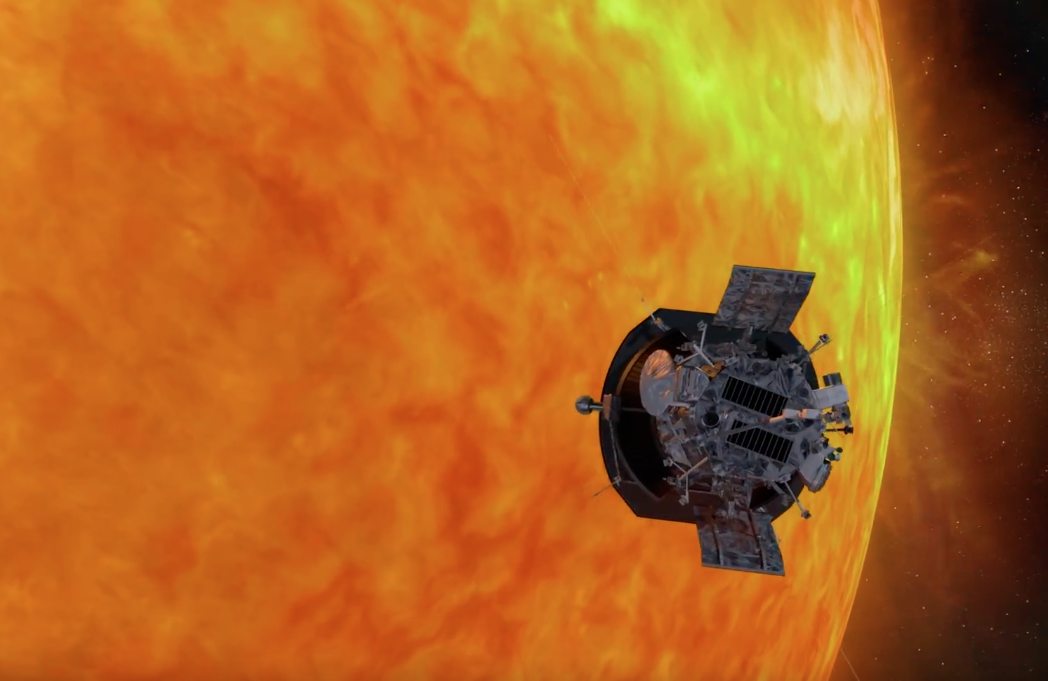First Perihelion: Into the Unknown
Posted on 2018-11-02 13:03:12At about 10:28 p.m. EST on Nov. 5, Parker Solar Probe will achieve its first perihelion - its first close approach to the Sun - and will come within 15 million miles of the Sun's surface. During perihelion, the spacecraft will reach a top speed of 213,200 miles per hour relative to the Sun.
This speed and distance will mark new records for both closest solar approach and top heliocentric speed by a spacecraft.
At perihelion, Parker Solar Probe will fly through material at about 3.6 million degrees Fahrenheit. The spacecraft will be protected from intense solar radiation by its Thermal Protection System, or heat shield. Parker Solar Probe employs a host of autonomous systems to keep the spacecraft safe without guidance from Earth — including automatic retraction of the solar panels to regulate their temperature, attitude control using solar limb sensors that ensures all of the instruments remain in the heat shield's shadow, and a sophisticated guidance and control system that keeps the spacecraft pointed correctly.
For several days around the Nov. 5 perihelion, Parker Solar Probe will be completely out of contact with Earth because of interference from the Sun's overwhelming radio emissions.
Following perihelion, the mission operations team at the Johns Hopkins Applied Physics Laboratory will await a beacon tone from the spacecraft, which will let them know the status of Parker Solar Probe.
At about 10:28 p.m. EST on Nov. 5, Parker Solar Probe achieved its first perihelion - its first close approach to the Sun - and came within 15 million miles of the Sun's surface. During perihelion, the spacecraft will reach a top speed of 213,200 miles per hour relative to the Sun.
Credit: NASA/Johns Hopkins APL

FirstPerihelionImage
Credit: NASA/Johns Hopkins APL/Steve Gribben
High-Res Image